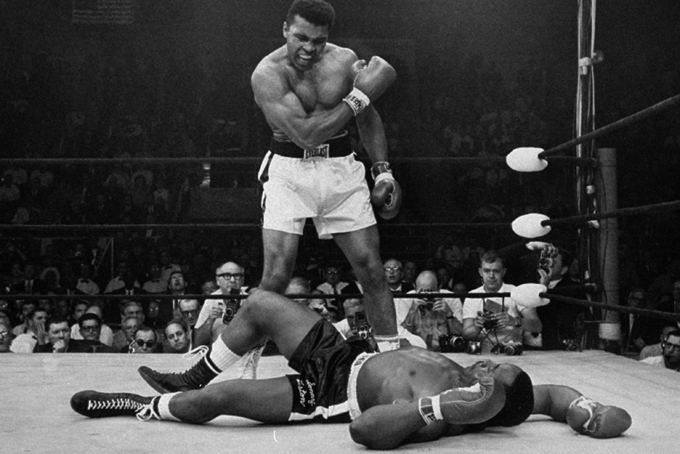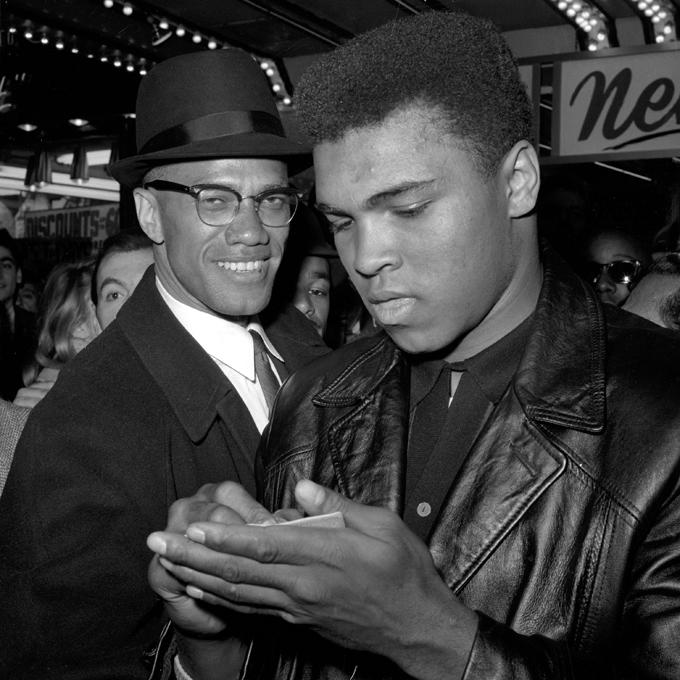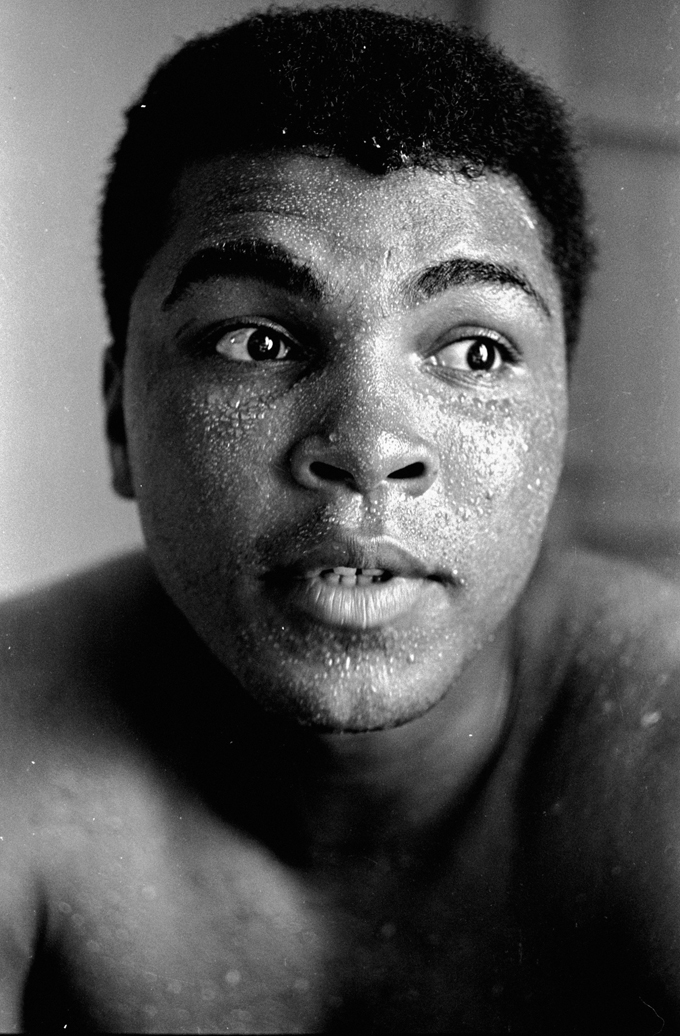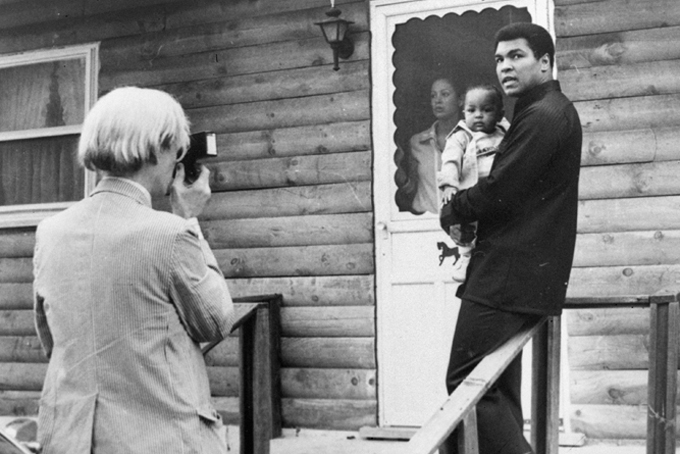
Nobody knew quite what to make of the handsome young boxer whose mouth seemed to be his greatest weapon. What they did know was that Cassius Clay didn’t stand a chance.
Not against Sonny Liston, the fearsome pug and ex-con with mob ties who wore a perpetual scowl as he knocked out almost everyone put in front of him in the ring. Not even when Clay predicted in verse that a new heavyweight champion would be crowned that February night 50 years ago in Miami Beach.
“The crowd did not dream when they put up the money,” he roared, “that they would see a total eclipse of the Sonny.”
Oddsmakers thought the fighter known as the Louisville Lip was as crazy as his poems. They ignored the 22-year-old’s boast that he would win in eight; they made Liston a 7-1 favorite.
“I’m the champ of fightin’,” Liston sputtered to Clay, “but you the champ of talkin’.”
They met as the nation was on the eve of massive change, which few could foresee and even fewer could understand. Still deep in mourning over the assassination of President John F. Kennedy just three months earlier, the country would be rocked by race riots in major cities in the long, hot summer ahead. Civil rights activism was gearing up, the conflict in Vietnam was moving into U.S. headlines, there was new music in the air.
In fact, on their frenzied first visit to America, the Beatles stopped by the gym where Clay was training, to check out this fighter who, like them, was prepared to take on the world.
The world itself would soon want to check out Cassius Clay. Those starting to pay attention liked some of what he offered, such as the poetic collaborations with cornerman Bundini Brown.
“Float like a butterfly, sting like a bee,” the two would chant together.
A lot of it they didn’t like. In Liston they had a fighter they knew, even if they did not respect the big puncher who was as surly outside the ring as he was ferocious inside it.
Clay was unlike anything they had ever seen, and it wasn’t just because he couldn’t seem to stop talking. Clay’s own father accused the Black Panthers of brainwashing his son. There were reports he was a confidant of Malcolm X, and a new disciple of the Black Muslim religion that frightened many in White America. Promoters managed to keep Clay quiet about his religious leanings until after the fight.
The silence didn’t last long. The day after the big fight, there was more to talk about than just the heavyweight championship of the world.
“I don’t have to be what you want me to be,” said the young champion who would take the name Muhammad Ali. “I’m free to be who I want.”

The man who would become arguably the most recognized figure in the world as Ali had trouble getting noticed at first, even after winning the gold medal as a light heavyweight at the 1960 Rome Olympics. Clay was fast and he was good, but it wasn’t until he charged in the ring ranting and raving at Liston after the champion knocked out Floyd Patterson in Las Vegas in 1963 that he got a shot at the title.
The contracts were signed in Denver, where Liston lived and where Clay traveled in a secondhand airport bus he decorated with signs like “Sonny Liston Will Go in Eight” and “World’s Most Colorful Fighter.” Clay headed straight to Liston’s upscale house (where 32 for-sale signs suddenly sprouted in the neighborhood after he moved in a few months earlier), honking his horn and shouting in the air at 1 a.m. for the man known as the “Big Bear” to come down.
Former heavyweight champion Rocky Marciano was among those who thought Clay was making a big mistake. Clay’s own lawyer advised him against the fight.
“Cassius does not try to learn anything from one fight to the next and really doesn’t care about becoming one of the finest heavyweights who ever lived,” attorney Gordon Davidson said at the time. “All he wants is to be the richest.”
The deal was a good one for both fighters, with Clay getting 22 percent of the gross and Liston 40 percent. There was talk of it being one of the richest fights ever, and Clay wanted to use his share to fulfill his dream of living in a $100,000 house on a hill with a swimming pool.
On the morning of the bout, Clay arrived wearing a blue denim jacket that said “Bear Huntin'” on the back for a weigh-in unlike any boxing had ever seen. Clay seemed on the verge of hysteria as he shouted at Liston.
“Don’t let everyone know what a fool you are,” the sullen Liston said in a low voice.
The doctor conducting the prefight exams reported Clay’s pulse went from a normal 54 to 120. There was talk the fight could be called off if he didn’t find a way to calm down.
“This is a man who is scared to death,” Dr. Alexander Robbins told reporters. “He is living in mortal fear.”
A few hours later, Clay proved how wrong both Liston and the ring doctor were.
“The only thing that could scare Sonny was a crazy person who defied any kind of logic,” said Robert Lipsyte, who covered the fight as a young reporter for The New York Times. “I think Clay understood you could psyche out Sonny Liston by some show of insanity. And I think that’s exactly what he did.”

If the fight wasn’t won at the weigh-in, it was when the two men stripped off their robes in the ring. All the talk had been about the beast Liston was, but when the two stood in the center of the ring Clay was clearly the bigger man.
He dominated almost from the opening bell, peppering Liston with jabs and throwing fast combinations that seemed to bewilder the Big Bear. Except for a brief moment Clay got something in his eyes from Liston’s gloves and begged trainer Angelo Dundee to stop the fight, he was in complete control.
Still, it was shocking when the seemingly invincible Liston quit in the corner after the sixth round, claiming a shoulder injury.
“Look at me: I’m still pretty,” Clay said afterward.
There was talk that the fix was in, and a Senate subcommittee wasted little time in announcing it would investigate a contract that promised a rematch between the fighters. But the world had a new heavyweight champion, and he didn’t take long to make some news outside the ring.
Two days after the fight, Clay announced he was a member of the Nation of Islam and was changing his name to Cassius X. He would later become Muhammad Ali as he broke away from Malcolm X and aligned himself with the sect’s leader, Elijiah Muhammad.
“What is all the commotion about?” he asked. “Nobody asks other people about their religion. But now that I’m the champion I am the king so it seems the world is all shook up about what I believe.”
Gene Kilroy, who would later become Ali’s business manager, said Ali often talked about how his faith was the key factor in winning the fight
“Elijiah Muhammad told him, ‘How can you lose when Allah is on your side?'” Kilroy said. “That was his belief and he was strong with it. It gave him the confidence that he couldn’t lose to Liston.”
Ali and Liston would meet again the next February in, of all places, Lewiston, Maine. The fight ended quickly in the first round with a right hand few saw that clipped Liston’s jaw and put him on the canvas, where Ali towered menacingly above him.

He’s an old man now, his body ravaged by Parkinson’s Syndrome and his voice long since muted. The world has known him as Muhammad Ali for a half century, and he’s as revered now as he was once reviled.
The changes in society in those 50 years seem almost as unimaginable as young Cassius Clay winning the title in the first place. Ali was squarely in the middle of some of them in a way no athlete had ever before been.
“I really think in my mind the ’60s really began with that fight,” Lipsyte said. “Kennedy was recently dead, which was the end of the ’50s, and here we are on the verge of this new world of civil rights, anti-war demonstrations, and anti-authoritarianism. The Beatles were in that mix, Malcolm X was there. It seemed like there was a confluence of all those factors that would be the foundation of the ’60s and the changes that would come from that.”
The military draft notice that had loomed for Ali since before the first Liston fight would arrive during the prime of his career, and he famously refused induction in 1967, saying he was a conscientious objector who would not serve in the Army of a country that treated members of his race as second-class citizens. By this time, U.S. involvement in the Vietnam war was escalating, and supporters and opponents were hardening their positions.
“I ain’t got no quarrel with those Viet Cong,” he said, setting off on a path that cost him more than three years of his career and nearly put him in prison. Ali became a symbolic, if unlikely, figure of the anti-war movement, though his mind was always more on resuming his career than furthering the cause.
Even when he was cleared on a technicality by the U.S. Supreme Court he was a pariah to many.
“They can’t hate me or dislike me any more than they do now,” Ali said in 1969.
Ali would go on to be the first man to win the heavyweight championship three times, engaging in epic fights in faraway places that were so big they had names like “Rumble in the Jungle” and “Thrilla in Manila.”
And when he stood trembling, torch in hand, to light the Olympic flame in Atlanta in 1996, many of those watching couldn’t help but tremble along with him.
More than a fighter, he was for many an athlete who transcended sports as a champion of principle and human rights. More than just a man, he had become a figure of almost mythic proportion.
“You can’t interview him anymore, but he still has this kind of marvelous physical presence. He still seems to glow,” Lipsyte said of Ali, who’s now 72 and living in Scottsdale, Ariz. “I have obviously not had any substantive conversations with him in years but I still smile and feel good in his presence. He has that effect.”
Liston would fight for several more years, though he never got another chance at the title. He was found dead in 1970 in his Las Vegas home in what was ruled a drug overdose but what some of his contemporaries thought might have been a mob hit.
“Charles ‘Sonny’ Liston. 1932-1970,” reads the tombstone near the city’s airport. “A man.”
They were both men, different men who both wanted the same thing. It was Feb. 25, 1964, and in Miami Beach, the man who would become Muhammad Ali did what he said he would and shocked the world.
And the world would never be the same.